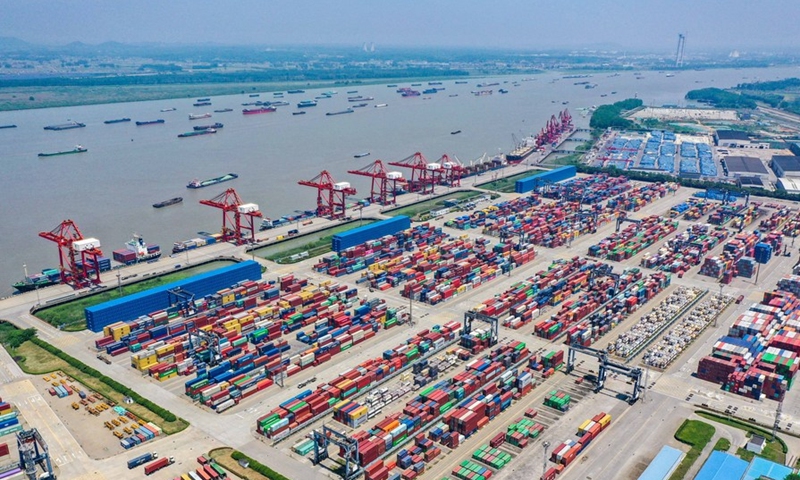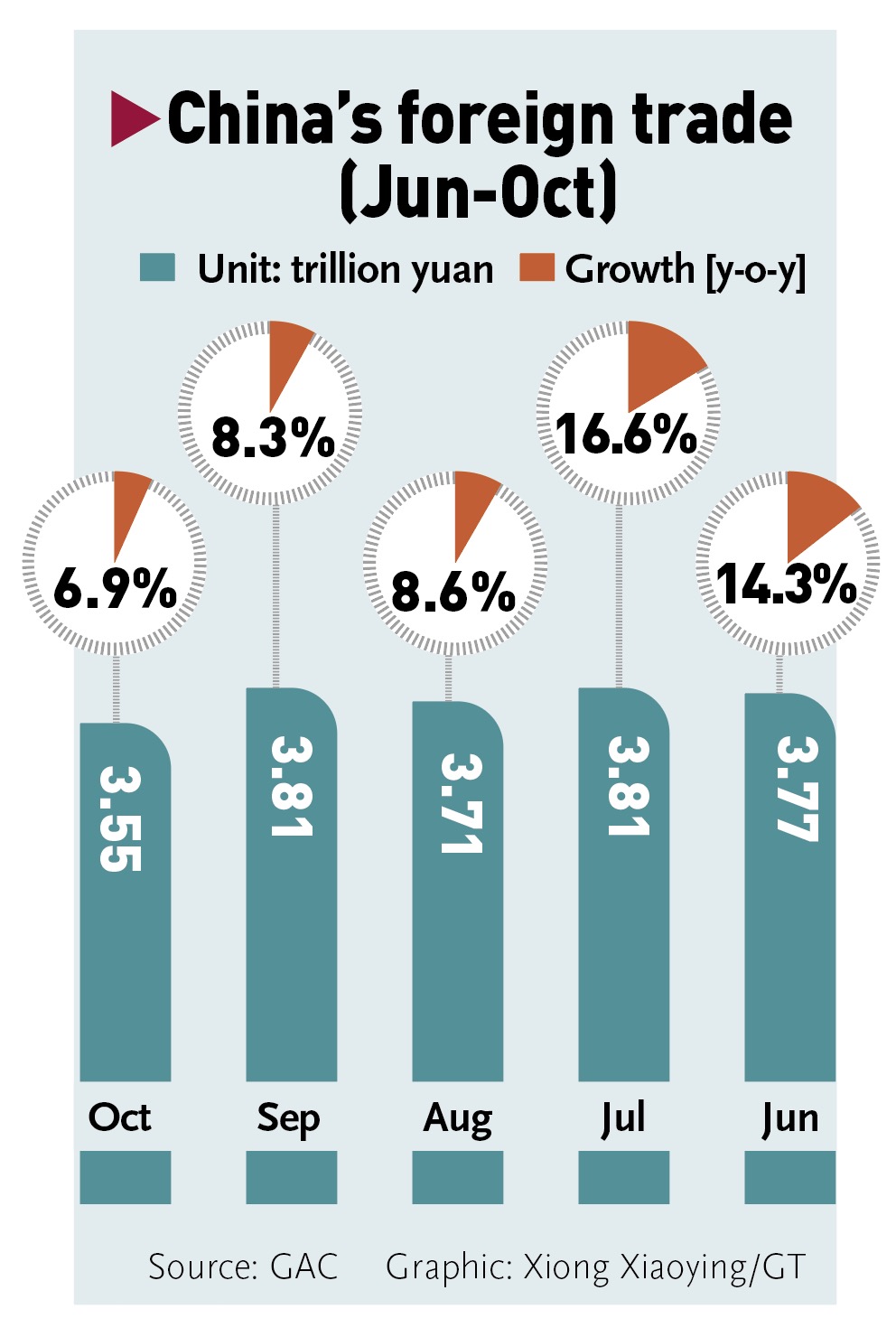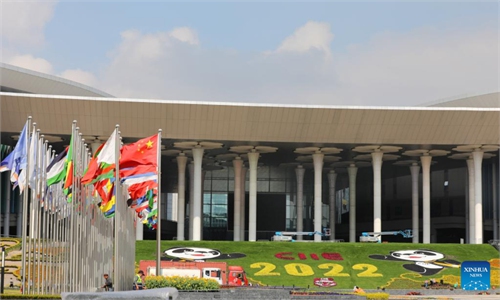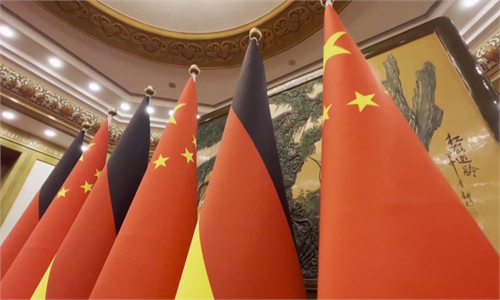
Aerial photo taken on May 6, 2022 shows a view of the Longtan Container Terminal of Nanjing Port in Nanjing, Jiangsu Province. Photo: Xinhua
China's foreign trade rose 9.5 percent year-on-year in the first 10 months this year in yuan terms, maintaining steady growth despite weakening demand abroad and geopolitical uncertainties, customs data showed on Monday.
Experts expect trade to continue stable growth during the rest of the year, as the authorities have unveiled new measures to stabilize the sector.
Between January and October, China's total trade reached 34.62 trillion yuan ($4.8 trillion), up 9.5 percent, the General Administration of Customs (GAC) said. Exports rose 13 percent to 19.71 trillion yuan, and imports were up 5.2 percent to reach 14.91 trillion yuan, according to the GAC.
In October alone, exports grew 7 percent year-on-year, slower than the reading of 10.7 percent seen in September. Imports rose 6.8 percent year-on-year, quickening from 5.2 percent growth in the previous month, underscoring the efforts of the country's measures to expand imports.
The weak demand in the EU and the US amid a potential economic recession dragged down China's exports last month, while a higher base last year and COVID-19 resurgences at home contributed to the slower growth in October, Bai Ming, deputy director of the International Market Research Institute at the Chinese Academy of International Trade and Economic Cooperation, told the Global Times on Monday.
According to a report by S&P Global, the JPMorgan Global Manufacturing Purchasing Managers' Index further slipped from 49.8 in September to 49.4 in October - its lowest level for 28 months - pointing to a sustained reduction in production globally.
Despite the clouds on China's overall exports, there were some outstanding developments in the trade sector in the first 10 months.
China's exports of traditional goods such as bags and shoes grew by more than 20 percent year-on-year, China Central Television reported Monday, citing GAC spokesperson Li Kuiwen.
He said that exports of electric cars doubled and exports of machinery products including lithium batteries and solar batteries jumped 80 percent during the period, reflecting China's export upgrading while displaying the sector's strong competitiveness in the world.
Thanks to the government's supportive policies, the private sector posted a better trade performance during the period. According to the GAC, the foreign trade of the country's private companies stood at 17.44 trillion yuan, up 14.4 percent year-on-year in the first 10 months.
China maintained close economic cooperation with regional partners and the country's diversified international layout was increasingly optimized, experts said.
ASEAN was China's largest trading partner in the first 10 months, with bilateral trade up 15.8 percent. China's trade with EU - its second-largest trade partner - grew 8.1 percent, while trade with US was up 6.8 percent, according to the GAC.
Trade with Belt and Road Initiative economies jumped 20.9 percent between January and October, while trade with the other 14 members of the Regional Comprehensive Economic Partnership (RCEP) rose by 8.4 percent year-on-year.
Looking ahead, Huo Jianguo, vice president of the China Institute for World Trade Organization Studies, expects the foreign trade sector will continue to grow steadily in the coming months due to the traditional peak season for exports and imports.
Huo said that China should continue to explore the Southeast Asian market, while strengthening exports of high-tech products where it has an advantage, such as electric vehicles.
"We will strive to keep foreign trade growth within a reasonable range, and achieve the goals of maintaining stability and improving quality throughout the year, while continuing to make positive contributions to the recovery of the national economy," Shu Jueting, spokesperson of the Ministry of Commerce, said on October 27.
There are many favorable conditions for stable foreign trade growth, she said, noting that China has sound industrial fundamentals, as enterprises are improving their capability in fulfilling orders and innovations.
The commerce ministry recently unveiled specific moves to stabilize the development of the country's foreign trade sector. The department asked local governments to ramp up construction of innovative foreign trade platforms, tap the potential of cross-border e-commerce to stabilize foreign trade, and facilitate foreign trade through measures like ports improvement and the elimination of unnecessary administrative fees.

Graphic: GT



